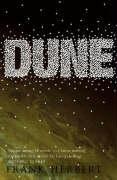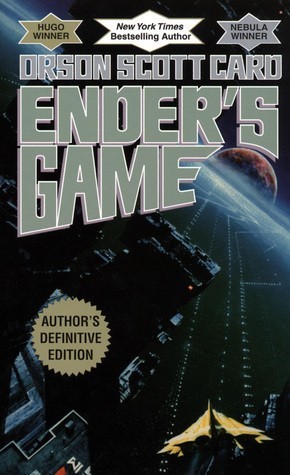Stacey Mason rated The Night Circus: 4 stars

The Night Circus by Erin Morgenstern
The circus arrives without warning. No announcements precede it. It is simply there, when yesterday it was not. Within the …
This link opens in a pop-up window

The circus arrives without warning. No announcements precede it. It is simply there, when yesterday it was not. Within the …
Cadence Sinclaire comes from old money. She spends her summers with family and friends on a private island off The Cape. Then one summer something terrible happens. She can't remember it and nobody wants to talk about it; even her youngest cousins are instructed to politely change the subject.
I picked this up for a breezy airport read, and it was perfect for that. E. Lockhart writes well, the mystery is intriguing, and the prose is often surprisingly lyrical for YA. Layers of summer romance, a family that doesn't understand, and coming-of-age narratives weave seamlessly into the mystery. Much of the intricacy of the family's power dynamics are conveyed through allegorical fairytales
"Once upon a time there was a king who had three beautiful daughters"
which become increasingly more heavy-handed and literal as the book resolves. While others have cited this heavy-handedness and the similarly unnuanced treatment of race, class, …
Cadence Sinclaire comes from old money. She spends her summers with family and friends on a private island off The Cape. Then one summer something terrible happens. She can't remember it and nobody wants to talk about it; even her youngest cousins are instructed to politely change the subject.
I picked this up for a breezy airport read, and it was perfect for that. E. Lockhart writes well, the mystery is intriguing, and the prose is often surprisingly lyrical for YA. Layers of summer romance, a family that doesn't understand, and coming-of-age narratives weave seamlessly into the mystery. Much of the intricacy of the family's power dynamics are conveyed through allegorical fairytales
"Once upon a time there was a king who had three beautiful daughters"
which become increasingly more heavy-handed and literal as the book resolves. While others have cited this heavy-handedness and the similarly unnuanced treatment of race, class, wealth, and privilege as failings of the book, I can excuse these as YA elements peeking through what is otherwise a well-developed and intriguing mystery. Themes of narrative crafting, perception vs reality, and the rewriting of history serve as interesting balances to the heavy treatment of class and race.
That said, I found the end of the book inexcusable. The excellent pacing and development for most of the book is destroyed by a twist in the last 20 pages that is both overdone and incompatible with the world that Lockhart has built for us. The climax feels too abrupt, like too hostile of a "gotcha", and the denouement does little to smooth how jarringly the twist is executed.
Overall, We Were Liars is a charming experience rooted as much in power fantasy, lyricism, and romance as it is in mystery, that I loved up until the mystery was unsatisfyingly resolved.
Rainbow Rowell's Fangirl was recommended to me by a mentor who has now recommended several books in a row about young writers coming into their own voice—I think he’s trying to tell me something.
Subliminal messages from mentors aside, Fangirl is a quick and fun read, a touching coming-of-age story, and one of the most honest accounts of social anxiety I’ve read. We see the story from the perspective of Cath, a young writer and twin transitioning to college and independence from a complicated home life and emotional reliance on her twin sister Wren. Despite growing tension between Cath and Wren, a newfound interest in boys, and a tumultuous relationship with her roommate, Cath’s most interesting and difficult struggle is to find her own writing voice after years of successfully authoring popular fan-fiction for Simon Snow stories, a parodic take on Harry Potter with a bit of Twilight mixed in. …
Rainbow Rowell's Fangirl was recommended to me by a mentor who has now recommended several books in a row about young writers coming into their own voice—I think he’s trying to tell me something.
Subliminal messages from mentors aside, Fangirl is a quick and fun read, a touching coming-of-age story, and one of the most honest accounts of social anxiety I’ve read. We see the story from the perspective of Cath, a young writer and twin transitioning to college and independence from a complicated home life and emotional reliance on her twin sister Wren. Despite growing tension between Cath and Wren, a newfound interest in boys, and a tumultuous relationship with her roommate, Cath’s most interesting and difficult struggle is to find her own writing voice after years of successfully authoring popular fan-fiction for Simon Snow stories, a parodic take on Harry Potter with a bit of Twilight mixed in.
The plot is fast-paced and engrossing, but perhaps the book’s strongest asset is the narrative voice, told from Cath’s perspective. Cath is clearly a writer, and focuses on the small details of a person’s hairline or a dramatic mannerism and mentally catalogues dozens of ways to describe them. There’s a fantasy here of playing a writer just as much as actually being one, and while it comes off as a slightly juvenile fantasy, that works for a character who is not yet fully comfortable with her writing.
The unreliable narration has shining moments, including fantastic bits of character development, particularly for the things that go unsaid. We can see things our narrator doesn’t tell us, probably because she’s not ready to face them herself. Our narrator doesn’t think she’s unreliable, but her characterizations of some other characters manage to be subtle and charming without slipping into caricature. Other characters do occasionally fall flat, but it’s possible that our young writer sees them not as people but as characters to write later.
Each chapter ends with a Simon Snow excerpt. These are great in small doses to give depth to Cath and to show parallels in the evolution of her relationships and writing. Several chapters, however, contain extended excerpts which get a bit long and feel more like an interruption than an addition.
I wanted to nitpick the writing since so much of the book focuses on craft, from Cath’s mental notes of words to the feedback her writing teacher gives. But the writing, though clearly YA in form and voice, holds up under scrutiny and offers breezy read that I’d recommend to most of my nerd and writer friends.
Most creative professionals understand that constraints foster creativity, and this is the approach Challenges for Game Designers uses to encourage designers toward brilliant games, since most people, given a problem, will naturally tap into creative insights to find a solution. Designed for beginner to intermediate designers, each chapter focuses on certain aspects of game design: genre, manipulating mechanics, drawing from personal experiences, and so on to explore design problems and help the reader understand how designers think. The challenges are interesting and themselves creative.
The chapters are structured such that they provide a short introduction--usually only a few pages--to basic game design ideals. Each chapter then provides 5 design challenges, complete with concept, goal, and expected deliverables. Additional challenge ideas are available on the last page of the chapter. Though not as fleshed-out (which comes with pros and cons), these are also great motivators for designers to think of solutions …
Most creative professionals understand that constraints foster creativity, and this is the approach Challenges for Game Designers uses to encourage designers toward brilliant games, since most people, given a problem, will naturally tap into creative insights to find a solution. Designed for beginner to intermediate designers, each chapter focuses on certain aspects of game design: genre, manipulating mechanics, drawing from personal experiences, and so on to explore design problems and help the reader understand how designers think. The challenges are interesting and themselves creative.
The chapters are structured such that they provide a short introduction--usually only a few pages--to basic game design ideals. Each chapter then provides 5 design challenges, complete with concept, goal, and expected deliverables. Additional challenge ideas are available on the last page of the chapter. Though not as fleshed-out (which comes with pros and cons), these are also great motivators for designers to think of solutions to interesting problems.
Mostly, the challenges serve as the boundaries and starting point; designers have enough of an outline to avoid the anxieties that come with a blank page, while still having enough open-endedness to allow for innovative design.

Jonas Heide Smith: Understanding video games (2012, Routledge)
"From Pong to PlayStation 3 and beyond, Understanding Video Games traces the history of video games, introduces the major theories …

Dune is a 1965 science-fiction novel by American author Frank Herbert, originally published as two separate serials in Analog magazine. …

Andrew "Ender" Wiggin thinks he is playing computer simulated war games; he is, in fact, engaged in something far more …